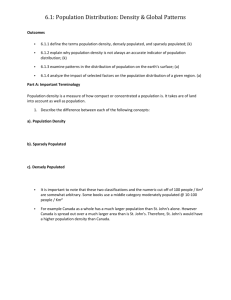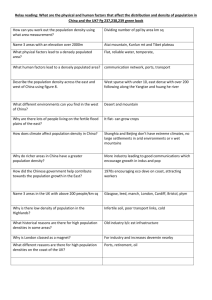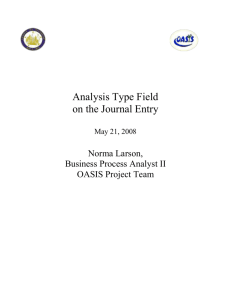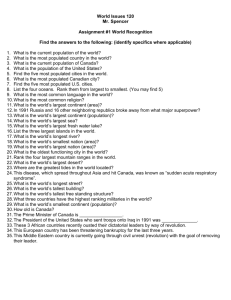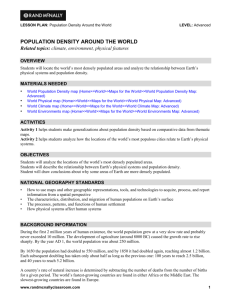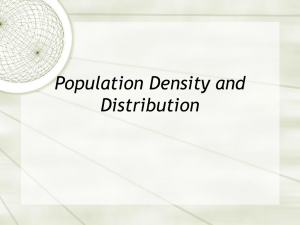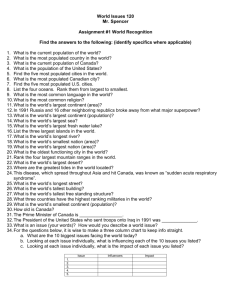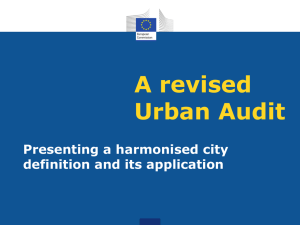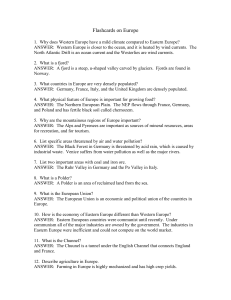Visual Design
advertisement
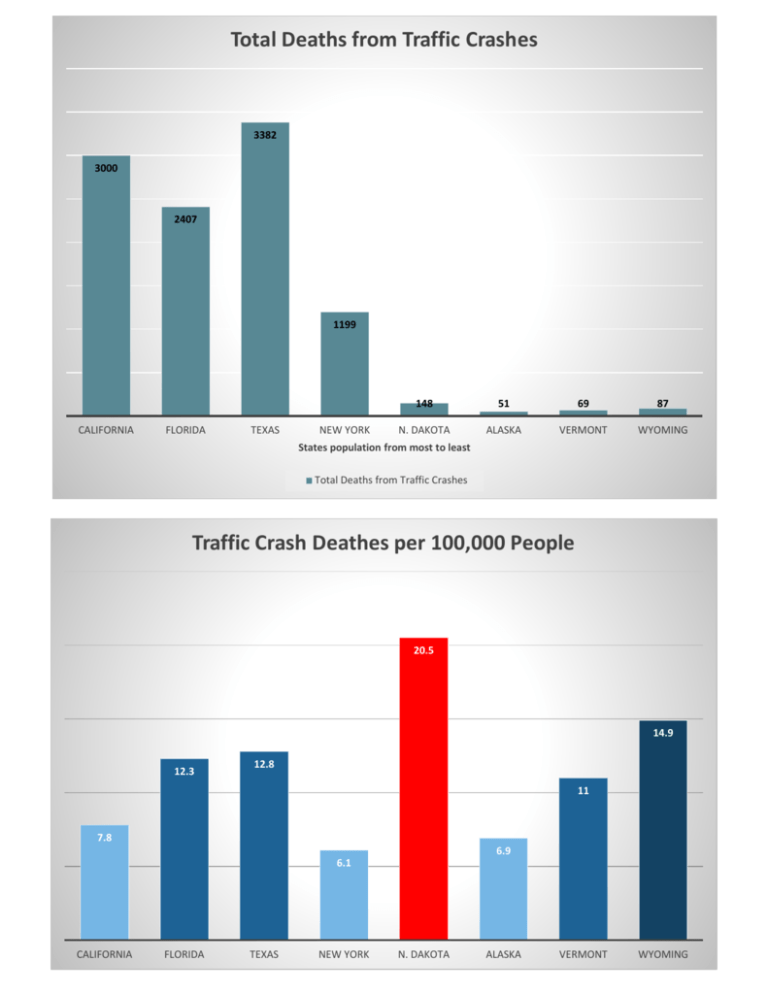
Total Deaths from Traffic Crashes 3382 3000 2407 1199 CALIFORNIA FLORIDA TEXAS NEW YORK 148 51 69 87 N. DAKOTA ALASKA VERMONT WYOMING States population from most to least Total Deaths from Traffic Crashes Traffic Crash Deathes per 100,000 People 20.5 14.9 12.3 12.8 11 7.8 6.9 6.1 CALIFORNIA FLORIDA TEXAS NEW YORK N. DAKOTA ALASKA VERMONT WYOMING Visual Design: A Practice in Arguments through Graphs The argument being made in the given graphs are a compare and contrast of the risk, by way of death, associated with driving in the illustrated eight states. These states were selected for their population size; four of the most populated American states, California, Florida, Texas, and New York, compared and contrasted with four of the least populated American, North Dakota, Alaska, Vermont, and Wyoming. The first graph makes a strong argument for driving in the more populated states as extremely hazardous when shown with the more rural states. Graph two makes a weaker argument for driving in rural states as being the riskier shown with the more densely populated. Graph number one’s argument has been created with a lack of context, showing strong biases against the four most densely populated states in relation to their high risk of death on their highways and byways overtly more so than the least populated states. The graph simply shows the total number of traffic deaths within each state and making an irrational argument vis-à-vis ratio ignorance. The casual viewer of graph one, by its design, could quickly conclude driving in those four more populated states would be the riskier to their lives than the rural states. Graph one’s design is non-threatening and seemingly benign in appearance to gloss over its inherent flaws. The non-assuming dark teal was chosen to be pleasing to the eye, understating, and nefariously professional and scientifically sound by way of its lack of vibrancy in colors known to illicit strong emotions. Sneaky single coloring coherently ordered from most densely populated to the least densely populated. The black bold of the font labelling the graph sits atop the graph to firmly and simply state the “Total deaths from Traffic crashes”, so the viewer can quickly and erroneously come to a conclusion. The black numbers for the total number of victims of deadly crashes was used for easier viewing against the grey shadowing of the graph’s background. With the shadowed background, the state of Texas’s (with the highest total of traffic deaths) bar is highlighted by the white it runs up to, giving it more emphasis. The y-axis, the totals are provided on the top of each bar for an ease of following as not needing the eye movement to move right and then back right to process the true numbers. Graph Number two is of proper context when concerning the nature of risk amid the rural and more urbane states. It is based on population per one thousand, creating a proper ratio of risk. It is more so unbiased. It is not as well labelled a graph along its x-axis. There could be a title along the bottom stating that the graph is designed from the most densely populated to the least densely populated state. The colors of the bars are certainly more sensational by showing in red the highest death rate of traffic crashes per 100,000 being North Dakota, the fourth least populated state. It is a bold and true statement and is properly a vicious counterpoint to graph one. The colors of the other bars, unnecessarily shaded with three different colors of blues, from deadlier darker to lighter less life riskier. The white font of the y-axis on the bars are easy to read. Graph one has an adequate amount of information displayed as opposed to graph two that lacks a y-axis label and a narrative of its order of states. There should have been an x-axis label firmly stating that the states are listed from most populated to least. As for overall appearance, graph one is the more coherent and not overly ornate with data nor coloring. Although graph two as more of an unbiased view, graph one appears more trustworthy. For a graph to be more unbiased, it should include average of distance traveled per year by drivers in each state bolstered by average speed limits within each state. As well as, giving the true population of each state. Also, both graphs would have been done justice if the bars were of a dark blue on pure white background. Questions arise as way North Dakota is the fourth least populated state but per 100,000 the most deadly, is it because of a false security with drivers, higher DUI related incidents, is because a vast array of wildlife wandering across the roads causing accidents, and do North Dakotans are traveling longer distances to destinations? Positive attributes of each graph are that the bars are evenly spaced apart in their separation and the y-axis has not been manipulated in a way to become hyperbolic in its argument. The thickness of the bars are bold enough to quickly facilitate comparisons and information is equal in their division.
